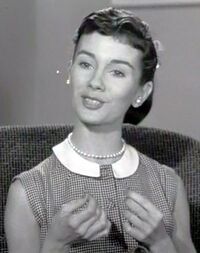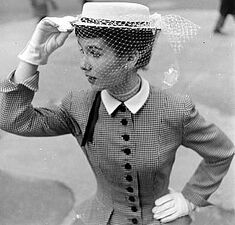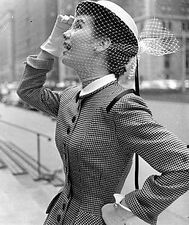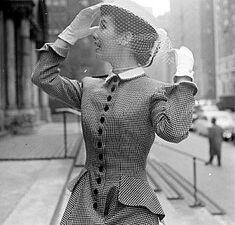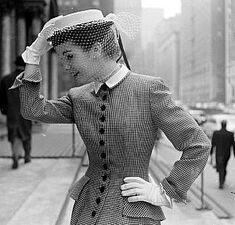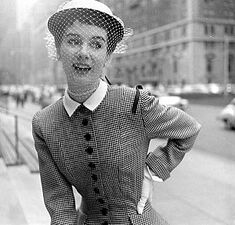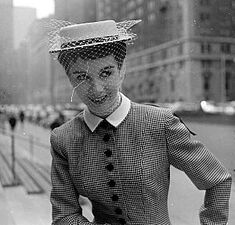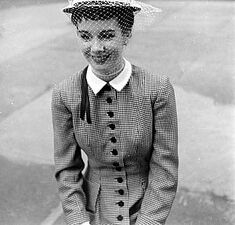Máiréad Ní Conmara: Difference between revisions
mNo edit summary |
mNo edit summary |
||
| (4 intermediate revisions by the same user not shown) | |||
| Line 26: | Line 26: | ||
==Career== | ==Career== | ||
===Rise to stardom=== | |||
[[File:MáiréadNíConmara.jpg|thumb|left|200px|Máiréad Ní Conmara in ''Blue Moon'']] | [[File:MáiréadNíConmara.jpg|thumb|left|200px|Máiréad Ní Conmara in ''Blue Moon'']] | ||
Máiréad made her acting debut in 1960 with ''Blue Moon''. Her wry, witty performance as a "professional virgin" brought her critical acclaim and made the film a commercial success. The film would also set the tone for her subsequent career. | Máiréad made her acting debut in 1960 with ''Blue Moon''. Her wry, witty performance as a "professional virgin" brought her critical acclaim and made the film a commercial success. The film would also set the tone for her subsequent career. | ||
| Line 33: | Line 34: | ||
She reached the height of her popularity by the mid-1960s, becoming one of Gylias' most successful actresses, and was in high demand as a model. One of her famous modeling works was a series of portraits by [[Annemarie Beaulieu]] titled [[Máiréad Ní Conmara#''fée délicate''|''fée délicate'']] ("Delicate fairy"), in which Annemarie sought to immortalise Máiréad's "cute and mischievous" qualities. | She reached the height of her popularity by the mid-1960s, becoming one of Gylias' most successful actresses, and was in high demand as a model. One of her famous modeling works was a series of portraits by [[Annemarie Beaulieu]] titled [[Máiréad Ní Conmara#''fée délicate''|''fée délicate'']] ("Delicate fairy"), in which Annemarie sought to immortalise Máiréad's "cute and mischievous" qualities. | ||
She made one notable foray into voice acting for the [[Coffee, Tea or Me?#Animation|animated adaptation]] of ''[[Coffee, Tea or Me?]]'', where she voiced Trudy Baker, with her colleague Victoria taking the role of Robin Jolly. | |||
===Style and substance=== | |||
Máiréad's signature roles were coy ''{{wpl|ingénue}}s'', which gained the humorous nickname "honourable {{wpl|cocktease}}s". Her characters were capable and stylish career women, enamoured with romantic pursuit. They would inevitably be caught up in in {{wpl|love triangle}}s or attract suitors, and would either humorously decline their advances or challenge them in ways that made fun of the lengths they would go to to try and win her affections. | Máiréad's signature roles were coy ''{{wpl|ingénue}}s'', which gained the humorous nickname "honourable {{wpl|cocktease}}s". Her characters were capable and stylish career women, enamoured with romantic pursuit. They would inevitably be caught up in in {{wpl|love triangle}}s or attract suitors, and would either humorously decline their advances or challenge them in ways that made fun of the lengths they would go to to try and win her affections. | ||
| Line 38: | Line 42: | ||
[[File:Maggie McNamara 1954.jpg|thumb|right|200px|Publicity portrait of Máiréad, 1962]] | [[File:Maggie McNamara 1954.jpg|thumb|right|200px|Publicity portrait of Máiréad, 1962]] | ||
Máiréad's ability to simultaneously embody charming innocence and coy flirtatiousness were key to her popularity. In one interview, she described her characters as "an exploration of what it means to 'play hard to get', as it were, with mutual consent and no harm done" — a theme that distinguished her from [[Alike Demetriou]] and [[France Gall]]'s similar public images. | Máiréad's ability to simultaneously embody charming innocence and coy flirtatiousness were key to her popularity. In one interview, she described her characters as "an exploration of what it means to 'play hard to get', as it were, with mutual consent and no harm done" — a theme that distinguished her from [[Alike Demetriou]] and [[France Gall]]'s similar public images. | ||
She described herself as "terribly shy", and was very close with her parents and siblings, who moved to Gylias to live with her after her career took off. At the height of her stardom, she was a very private person, avoiding interviews and living quietly on the outskirts of Mişeyáke. | |||
===Gylian symbol=== | |||
She became a style icon, her elegant [[Ðaina Levysti#"Levystile"|Levystile]] appearance reflecting her characters' dependable nature, and something of a {{wpl|sex symbol}}, mainly on the strength of her flirtatious characterisation and talent for verbal comedy. She understood that her appeal was based on "foreplay without consummation", and thus avoided filming sex scenes since they would "break the spell". | She became a style icon, her elegant [[Ðaina Levysti#"Levystile"|Levystile]] appearance reflecting her characters' dependable nature, and something of a {{wpl|sex symbol}}, mainly on the strength of her flirtatious characterisation and talent for verbal comedy. She understood that her appeal was based on "foreplay without consummation", and thus avoided filming sex scenes since they would "break the spell". | ||
Cultural commentator Hanako Fukui wrote that, at the height of her popularity, viewers both saw themselves in Máiréad's reliability, competence, and easygoing charm — traits that were in tune with the ideals of the [[Golden Revolution]] — and found her characters attractive as a romantic challenge due to their "playing hard to get". | Cultural commentator Hanako Fukui wrote that, at the height of her popularity, viewers both saw themselves in Máiréad's reliability, competence, and easygoing charm — traits that were in tune with the ideals of the [[Golden Revolution]] — and found her characters attractive as a romantic challenge due to their "playing hard to get". | ||
Since her characters behaved in many ways according to an Ossorian ideal of respectability, they looked harmlessly eccentric to Gylian audiences, a quality in evidence in her ''ingénue'' aspects. The "deceptive lightness" of her films and their rich subtext benefited them during the [[Gylian Invasion]], attracting fanbases in [[Delkora]] and [[ | ===Reception abroad=== | ||
Since her characters behaved in many ways according to an Ossorian ideal of respectability, they looked harmlessly eccentric to Gylian audiences, a quality in evidence in her ''ingénue'' aspects. The "deceptive lightness" of her films and their rich subtext benefited them during the [[Gylian Invasion]], attracting fanbases in [[Delkora]] and [[Megelan]] in particular. She also found an audience in Ossoria, where viewers generally perceived her characters as virtuous and practical in contrast to the Gylians she was surrounded by. | |||
Máiréad | ==Later life and death== | ||
Starting in the 1970s, Máiréad gradually took fewer film or television roles, and her last onscreen appearance was in 1976. She remained out of the public view for the remainder of her life, working as a typist and other temporary jobs to support herself. | |||
She struggled with anxiety and depression, being treated with {{wpl|psychedelic therapy}} due to poor reactions to {{wpl|psychiatric medication}}. She took no action to [[Law of Gylias#Intellectual rights law|renew her films' copyrights]], and after they expired, she mainly relied on temporary jobs and [[Social security in Gylias|assistance payments]]. | |||
She experienced a second burst of popularity in the 1990s, a decade of renewed national optimism and fondly revisiting [[Groovy Gylias]]. Her films and image were paid homage to by various [[Neo-Gylian Sound]] acts, including [[Stella Star]] who used portraits of Máiréad for the covers of ''[[This Year's Model]]'' and ''[[This Year's Girl]]''. | |||
However, Máiréad shunned the spotlight, letting her siblings upload her work to the [[Internet in Gylias#Publinet|publinet]] in her stead, and refusing all offers of interviews, including a proposed appearance in ''[[Nation Building]]''. She told [[Rasa Ḑeşéy]] she wanted to "preserve the magic" of her film career and allow audiences to remember her fondly as the vivacious "professional virgin" she had played on screen. | |||
She died on 18 February 2007 in her apartment. | She died on 18 February 2007 in her apartment. | ||
Latest revision as of 19:45, 2 November 2021
Máiréad Ní Conmara | |
|---|---|
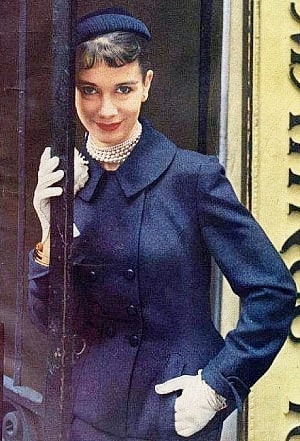 Máiréad Ní Conmara in 1960 | |
| Born | 18 May 1936 |
| Died | 18 February 2007 (aged 70) |
| Nationality |
|
| Occupation |
|
| Years active | 1958–1976 |
Máiréad Ní Conmara (Gylic transcription: Mared Nikunmara; 18 May 1936 – 18 February 2007) was an Ossorian–Gylian actress and model. She achieved fame for her work in the orgone film genre, where she specialised in the role of the "honourable cocktease", making her a symbol of the National Obligation period and Groovy Gylias.
Early life
Máiréad was born on 18 May 1936 in Liosmór. She was one of four children, with two sisters and a brother. Her father was a dockworker and her mother was a secretary.
While in secondary school, she was discovered by a modeling agent and began working as a teen model. She gained exposure in the Free Territories after appearing on the cover of teen, and later moved there to study dancing and acting.
Career
Rise to stardom
Máiréad made her acting debut in 1960 with Blue Moon. Her wry, witty performance as a "professional virgin" brought her critical acclaim and made the film a commercial success. The film would also set the tone for her subsequent career.
She followed up the solid start to her career with additional roles in orgone films, including the acclaimed Three Coins in the Fountain (1961) which teamed her up with fellow orgone stars Susanne Petersson and Victoria Douglas. She evolved with the genre as the National Obligation period gave way to Groovy Gylias, focusing on light comedies and georgette films.
She reached the height of her popularity by the mid-1960s, becoming one of Gylias' most successful actresses, and was in high demand as a model. One of her famous modeling works was a series of portraits by Annemarie Beaulieu titled fée délicate ("Delicate fairy"), in which Annemarie sought to immortalise Máiréad's "cute and mischievous" qualities.
She made one notable foray into voice acting for the animated adaptation of Coffee, Tea or Me?, where she voiced Trudy Baker, with her colleague Victoria taking the role of Robin Jolly.
Style and substance
Máiréad's signature roles were coy ingénues, which gained the humorous nickname "honourable cockteases". Her characters were capable and stylish career women, enamoured with romantic pursuit. They would inevitably be caught up in in love triangles or attract suitors, and would either humorously decline their advances or challenge them in ways that made fun of the lengths they would go to to try and win her affections.
Her characters were reinforced by a strong background of generosity and reciprocity inherited from orgone films, which brought her filmography praise from Ţaisa Eşal as "a profound and thorough exploration of human relations based on mutual aid and trust".
Máiréad's ability to simultaneously embody charming innocence and coy flirtatiousness were key to her popularity. In one interview, she described her characters as "an exploration of what it means to 'play hard to get', as it were, with mutual consent and no harm done" — a theme that distinguished her from Alike Demetriou and France Gall's similar public images.
She described herself as "terribly shy", and was very close with her parents and siblings, who moved to Gylias to live with her after her career took off. At the height of her stardom, she was a very private person, avoiding interviews and living quietly on the outskirts of Mişeyáke.
Gylian symbol
She became a style icon, her elegant Levystile appearance reflecting her characters' dependable nature, and something of a sex symbol, mainly on the strength of her flirtatious characterisation and talent for verbal comedy. She understood that her appeal was based on "foreplay without consummation", and thus avoided filming sex scenes since they would "break the spell".
Cultural commentator Hanako Fukui wrote that, at the height of her popularity, viewers both saw themselves in Máiréad's reliability, competence, and easygoing charm — traits that were in tune with the ideals of the Golden Revolution — and found her characters attractive as a romantic challenge due to their "playing hard to get".
Reception abroad
Since her characters behaved in many ways according to an Ossorian ideal of respectability, they looked harmlessly eccentric to Gylian audiences, a quality in evidence in her ingénue aspects. The "deceptive lightness" of her films and their rich subtext benefited them during the Gylian Invasion, attracting fanbases in Delkora and Megelan in particular. She also found an audience in Ossoria, where viewers generally perceived her characters as virtuous and practical in contrast to the Gylians she was surrounded by.
Later life and death
Starting in the 1970s, Máiréad gradually took fewer film or television roles, and her last onscreen appearance was in 1976. She remained out of the public view for the remainder of her life, working as a typist and other temporary jobs to support herself.
She struggled with anxiety and depression, being treated with psychedelic therapy due to poor reactions to psychiatric medication. She took no action to renew her films' copyrights, and after they expired, she mainly relied on temporary jobs and assistance payments.
She experienced a second burst of popularity in the 1990s, a decade of renewed national optimism and fondly revisiting Groovy Gylias. Her films and image were paid homage to by various Neo-Gylian Sound acts, including Stella Star who used portraits of Máiréad for the covers of This Year's Model and This Year's Girl.
However, Máiréad shunned the spotlight, letting her siblings upload her work to the publinet in her stead, and refusing all offers of interviews, including a proposed appearance in Nation Building. She told Rasa Ḑeşéy she wanted to "preserve the magic" of her film career and allow audiences to remember her fondly as the vivacious "professional virgin" she had played on screen.
She died on 18 February 2007 in her apartment.
Private life
Máiréad was married once, with the marriage ending in divorce, and had a long-term relationship later. Neither couple had children.
She was non-religious and, in her brother's words, "either lacking any opinions about politics or so good at keeping them to herself not a hint of them ever leaked out." Family remembers also recalled that she was badly affected by the Ossorian war crisis, describing it as "the worst tragedy of her life".
